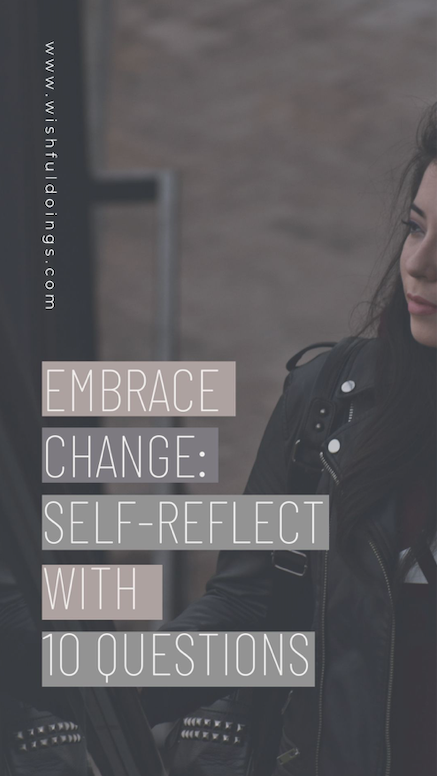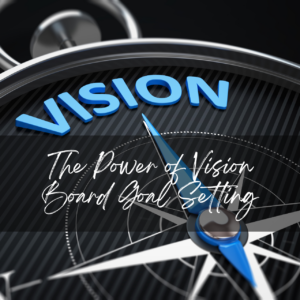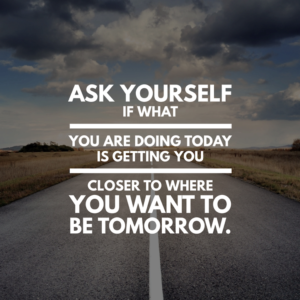Are you in the middle of a metamorphosis? While most would agree that the world around us is constantly changing, it’s easy to forget the role we play in that change. We, too, are constantly changing and evolving. Yet, as human beings, we like to settle in and get comfortable. Who doesn’t love a good routine? However, every so often, the routine you once found comforting can begin to feel stale, or even worse, suffocating.
How To Recognize When the Change Is You
It never fails. You have a sneaking suspicion that something’s up. You can’t quite place your finger on it, but you feel like something is off. Maybe you’ve been going about things the way you normally do, but one day you begin to feel unsettled for no apparent reason. You might find that you no longer enjoy something that used to bring you joy. You chalk it up to a bad day, off week, or tough time. But days, weeks, or months later you begin to realize that the feeling is not going away. If you wait long enough, it will begin to gnaw at you. By the time you reach the gnawing stage, you’re likely irritable, angry, and frustrated.
The signs can be easy to miss at first. We all have off days, right? But when you find yourself on shaky ground and your usual creature comforts are beginning to feel like they’re holding you back, it might be a sign that the change is you. Your body, mind, and spirit are communicating with you to say that your usual routine just won’t cut it anymore.
When your lifestyle no longer suits you, it can feel like dis-ease, and possibly disease too [especially if you’re living a sedentary lifestyle and engaging in unhealthy eating habits]. You might also begin to experience feelings of boredom, restlessness, pessimism, anxiety, depression, and more. Do a quick environmental scan. If little to nothing has significantly changed in your environment to trigger your feelings of dis-ease, it’s time to look inward and prepare to embrace change.
Engage in Self-Reflection To Embrace Change
According to Maslow’s hierarchy of needs, we all desire to move toward our self-actualization, but our progress can be interrupted by failure to meet lower level needs. Lower level needs include physiological, safety, love and belonging, and esteem. Maslow’s motivational model was later expanded to include cognitive needs and transcendence needs.
Our life experiences, such as divorce, loss of a loved one, loss of a job, and so forth, can cause us to fluctuate between the various levels of the hierarchy. Thus, when we find that our needs are no longer being met, either due to new emerging needs or lower level needs no longer being satisfied, we experience dis-ease and misalignment. To learn more about Maslow’s Hierarchy of Needs (pre-expansion of his model), read this medically reviewed article in Verywell Mind.
Self-Reflect with These 10 Questions:
- Do you feel like you are living a life aligned with your purpose?
- Are you putting your strengths and talents to good use?
- Do you have goals (ex: personal, professional, bucket list)
- Are you on track to achieve your goals?
- Do you feel fulfilled in your personal and professional life?
- Are you you growing and/or learning something new?
- Do you feel engaged in your relationships?
- Are the needs you crave being met?
- Are you engaging in hobbies or pastimes you enjoy?
- Do you have time for yourself?
If you answered, “no,” to any of these questions, you might be experiencing a misalignment. When this happens, it’s time to take a deeper look. Deeper exploration will help you reorient yourself and discover where you are on your journey toward self-actualization. The acknowledgement of dissatisfaction with previously met needs or new needs indicates that you have changed. Essentially, you need or want more of something or something different altogether.

How To Embrace Change When It Goes Unnoticed?
When change is happening to us, think externally, we are more sensitive to it. As an example, envision yourself at the beach. Now imagine yourself on a floatation device in the ocean. If you’re at sea, you can lose sight of land in no time. The waters are more turbulent, the wind can pick up, and the ride becomes more bumpy. There’s no doubt in your mind that the water is carrying you away from safety as you quickly drift from the shore—your origin. You’ll likely have a visceral reaction—possibly fear—and will immediately react.
However, sometimes change is slow [reeeal sloooooow]. Imagine you’re on that same flotation device in a lake. The experience is peaceful. You close your eyes to soak up the warmth of the sun. You find yourself relaxed and soothed by the subtle ebb and flow of the water beneath you [feels good right?]. Here’s the problem. If you’re too comfortable and not paying attention, you might think you’re in the same place. The trouble is that you’re not. You didn’t notice that you drifted away from the shore. The longer your eyes are closed, the more abrupt your disorientation when they reopen.
Change from within can be subtle at first. However, with enough time and disruption to your inner peace, change will emerge from within you. The longer it takes for you to recognize, acknowledge and understand the changes you’re experiencing, the more dissonance you might experience. That being said, with the adoption of mindfulness activities and a standing self-reflection practice, you can learn to embrace change and navigate your changes just as gently as their emerging.
Why Are You Changing?
Internal change is due to any number of factors. As you age, your values shift according to different life stages, responsibilities, and experiences. At different stages of your life you might prioritize excitement, adventure, acquiring knowledge, promotion, power, actualization, freedom, or health. New experiences can lead to more curiosity, while developing new relationships can lead to new interests. If you’ve resided in your comfort zone for an extended period of time, boredom might provoke you to break free and try something new.
Ultimately, it’s very likely that your older self will not resemble your younger self in most ways, regardless of your current age. Check out this HuffPost article about the conclusion of the longest-running study of human personality. The results of the study challenge the idea that personality is a relative constant throughout your life. One could argue that the findings support that such a divergence from who we were ought to provoke a constant need for self-assessment and self-exploration to reacquaint our old selves with our future selves. The sooner you learn how to embrace change, the better.
How To Recognize That You Are Changing?
Navigating external changes like a new boss or the birth of a child can be a hard adjustment. However, when the change is you, it could be even tougher. Whereas an external change is typically abrupt and immediately acknowledged, an internal change can be subtle and practically unnoticeable due to incrementalism. Tiny changes lurking beneath your consciousness can go unnoticed for long periods of time. While you’re in transition, you might engage in continuous missteps with your decision-making in your personal and professional life. In other words, you might ignore critical inflection points on your journey, miss out on opportunities, and self-sabotage.
Self-Sabotage
One of the signs of self-sabotage is the misalignment between your desires and actions. According to Shirani Pathak, a licensed psychotherapist in San Jose, California, self-sabotage is “a protective mechanism created by your psyche in order to keep you safe from any potential danger or harm. What’s familiar to us is what our psyche considers safe.” This goes back to the desire as human beings to settle in and get comfortable. To learn more about self-sabotage and how a pattern of subconscious thoughts and behaviors can create obstacles to your goals, I recommend this brief article in PsychCentral.

How To Embrace Change and Become More You
It’s important to remember that change is inevitable, normal and necessary. You are on a path to stepping into the authentic you of today. Remember that the you of today will look differently from the you of yesterday or even tomorrow. You are growing! As you begin to notice differences in what you like, want, and desire—no matter how overt or subtle—name and acknowledge how you feel and the emotions you are experiencing. A beneficial exercise to capture your growth journey is a journal. You can also vocalize your feelings and experiences with loved ones, such as family and friends. In time, you’ll be able to celebrate your growth.
Since growth is a process and not something that’s done at a set point in time, you might find it beneficial to regularly engage in a ritual of self-care [such as the journaling activity I mentioned above]. In addition, including mindfulness practices into your daily routine will help ground you when life is shifting around. If you feel that you are going through changes that are part of a collective experience, you can also connect with a community of individuals who have experienced similar changes. This can be an informal or formal community. The goal is to surround yourself with support and incorporate opportunities for self-reflection as you evolve and change throughout your life.
In Summary
There will be many times throughout your life where you will find that you are going through changes. While some changes might be big, some changes might be small and unnoticeable at first. You might experience a change in your music preferences, your group of friends, the types of books you read, how you like to spend your time, and so forth. Over time, you can expect to engage in myriad emotional, spiritual, mental, and physical changes. By learning how to embrace change, you can more gracefully transition to who you are becoming.
All of the changes you experience in your lifetime are a part of your growth and integrate into your identity. Ultimately, these changes promote your growth and lead you down a path of authenticity and self-actualization. Embrace the new you! Without these changes, you would be stagnant and not tapping into your full potential, building resilience, gaining wisdom, or having new experiences.
Five Tips on How To Embrace Change and Live More Authentically:
- Accept that change is normal, inevitable and necessary.
- Identify and acknowledge changes you notice, as well as your feelings and emotions.
- Invest in getting to know new parts of yourself.
- Engage in rituals that promote your self-care and ground you. Practice mindfulness activities like meditation or walking, self-reflective activities such as journaling, and supportive activities like connecting with a community of individuals who share similar experiences.
- Celebrate your growth! You are ascending on your journey toward self-actualization.
CHECK-IN
- What changes have you noticed in yourself lately?
- How do you feel about who you are becoming?
- What self-care rituals do you engage in or plan to engage in?

























